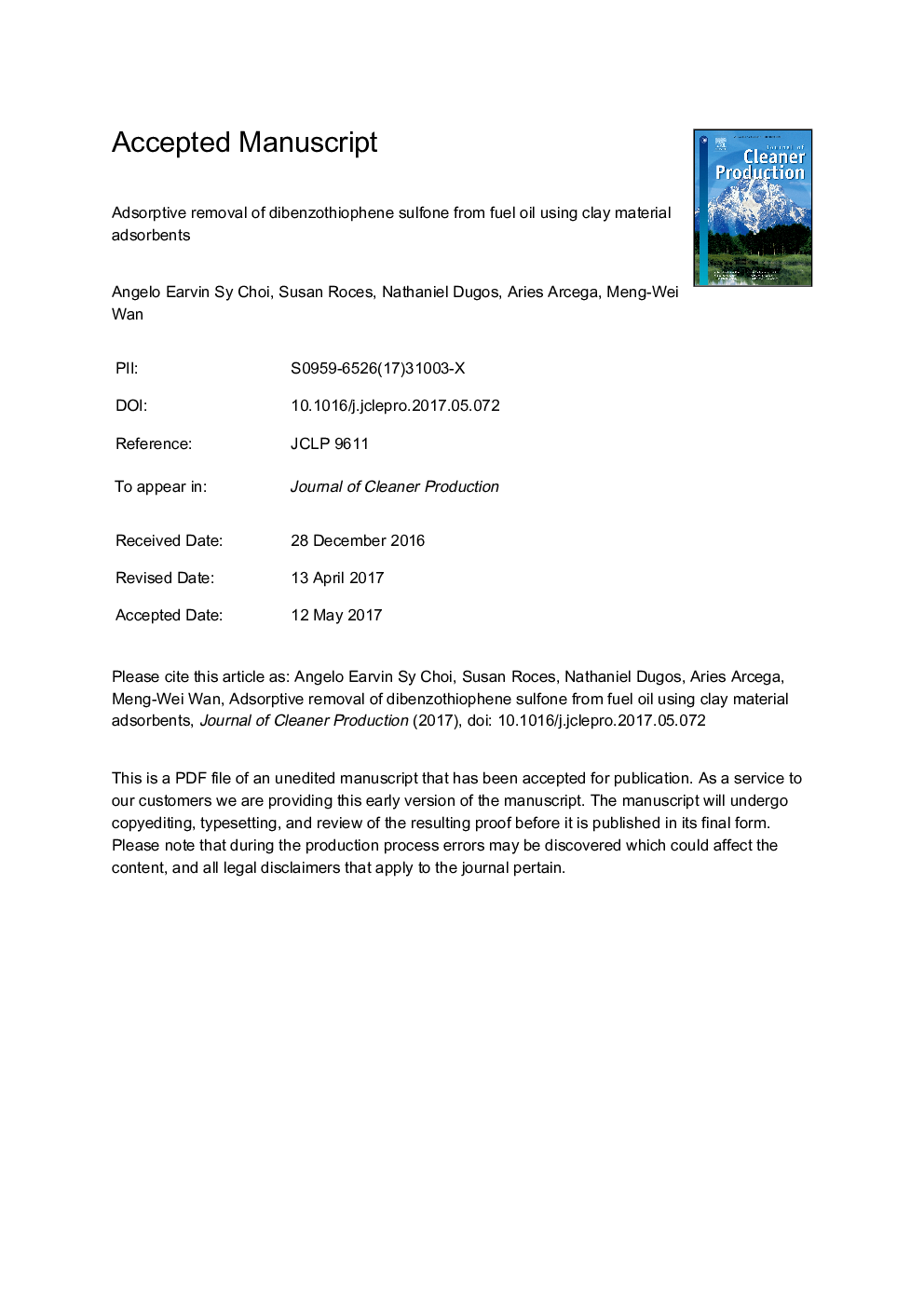| Article ID | Journal | Published Year | Pages | File Type |
|---|---|---|---|---|
| 5480835 | Journal of Cleaner Production | 2017 | 39 Pages |
Abstract
Dibenzothiophene sulfone (DBTO) adsorption utilizing clay material adsorbents such as activated clay, bentonite and kaolinite were investigated in this study. The properties of each adsorbent were characterized using Fourier transform infrared spectroscopy, scanning electron microscope, Brunauer, Emmett and Teller surface area analyzer and zeta potential. The effects of pH (1.0-5.0), contact time (5Â min-48Â h), temperature (298-328Â K) and initial concentration (10-1000Â mg/L) were examined in a batch adsorption process to determine the suitability of clay material adsorbents in DBTO removal. Kinetic models of pseudo-first order, pseudo-second order and intraparticle diffusion were used to assess the experimental data. Results showed high correlation to the pseudo-second order kinetic model (R2Â >Â 0.99) that implies chemisorption as the rate-limiting step. Isotherm models of Langmuir, Freundlich, Temkin and Dubnin-Radushkevich were used to evaluate the equilibrium experimental data. DBTO adsorption showed a good fit towards the Freundlich isotherm (R2Â >Â 0.99) which indicates a heterogeneous adsorption onto the adsorbent. Thermodynamic studies indicated that DBTO adsorption onto clay material adsorbents was endothermic. Utilizing the adsorbent of activated clay was spontaneous while kaolinite was non-spontaneous at 298-328Â K. Bentonite was found to be only non-spontaneous at 298Â K. Activated clay displayed a good potential in adsorbing sulfones to achieve low sulfur fuel oil in an oxidative desulfurization process.
Related Topics
Physical Sciences and Engineering
Energy
Renewable Energy, Sustainability and the Environment
Authors
Angelo Earvin Sy Choi, Susan Roces, Nathaniel Dugos, Aries Arcega, Meng-Wei Wan,
